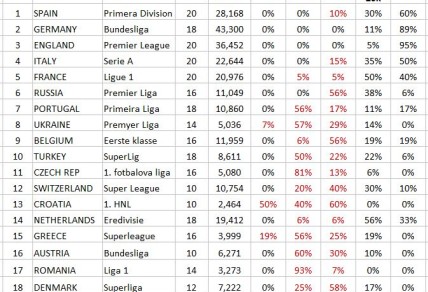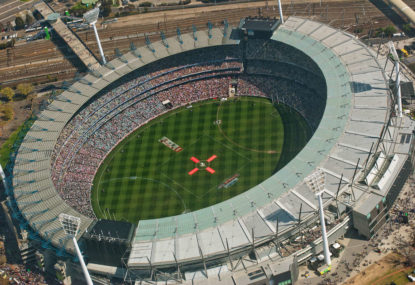It appears that, during the past decade, Australians have become obsessed with crowd numbers and there has been a significant shift in the way Australians discuss sport.
No longer is it sufficient to watch your team playing, or to watch a contest as a neutral and savour the technique, tactics and physical athleticism. Rather, nowadays, the burning question during, and after, the contest is: “how big was the crowd?”
If the crowd number is too low (usually an arbitrary figure of 20,000 is required to arouse some Australians) the existence of the league and member clubs are questioned.
It matters not that the contest was fabulous. If the crowd wasn’t big, the event will be dismissed.
It never used to be like this. Australians never used to bother whether crowds were less than 20,000 or less than 10,000 at top level club sport. They were happy to watch their team playing.
So what has prompted this recent obsession in Australia with “how big was the crowd?”
Is it a psychological issue linked to a deeper inferiority complex that prompts some Australian sports fans to clutch any minuscule evidence of grandiosity, like a toddler grabs a security blanket?
Is it a reflection of a society that will only attend events if it affords an opportunity to post frivolous photos on social media and boast about it at the water-cooler on Monday?
Or, is it simply a corollary to the 21st century phenomenon where people define self-worth based on popularity, notwithstanding poor quality of the person’s character?
More worryingly, it has now reached a stage where strategic decisions about sport (e.g. creating women’s sporting leagues, or a National second Division for men’s football) are heavily influenced by whether the events are likely to attract big crowds.
Huge amounts of scarce public funds are allocated towards constructing stadiums with capacity over 60,000 that sit empty for 95 per cent of the year.
Don’t misunderstand me. I agree any strategic decision that requires funding should have a business case to validate the decision. However, as long as there is a net positive return on an investment why should it matter if a club can only attract 500 people to its games and will never attract 50,000?
Let’s be clear, the majority of sport in Australia is played and watched at grassroots level and all grassroots sporting competitions and their member clubs survive with small crowds (often less than 100) attending thousands of venues across the country.
So, we know small crowds can work for sport played in Australia at the amateur and semi-professional level. But, what about higher levels of sport? Can sport survive with small crowds?
Well, when we look overseas, small crowds are not just confined to amateur and semi-professional sport.
Table 1 lists the top 20 football leagues in Europe, as defined by the Uefa Country Coefficient. These are not Mickey Mouse, or amateur, sporting leagues. These are full-time professional sporting leagues and contain the biggest, most valuable brands in the world of football.

What becomes clear is that, apart from England’s Premier League and Germany’s Bundesliga, every league in Europe has professional football clubs that average home crowds less than 10,000.
But, that’s not the worst of it. In fifteen of these Top 20 football leagues in Europe, there are professional clubs that do not even get average home crowds higher than 5,000.
And, shock horror – we even have professional football clubs in the Top 20 leagues of Europe, who get average home crowds less than 1,000! Can you imagine the media and fan hysteria in Australia if clubs in the A-League, or a future National second Division, could only manage average crowds less than 1,000?
So, even if the rest of Australia persists with “how big is the crowd”, it’s time for the football community to grow up and dismiss such juvenile sports conversation when we are formulating our vision for the future of football in Australia.
We must be more sophisticated with our sports viewing. Let’s analyse the contest; not the size of the crowd. Some contests will be exciting and action-packed. Some contests will be dull and boring.
Let’s be savage with our analysis of the dull contests and strive to be better on the park; not simply bigger in the stands.
And, above all, let’s accept that a National second Division in men’s football, or the top flight W-League may have crowds less than 5,000, or even less than 1,000, but the competition can still be vibrant, entertaining and highly valued for those who play and watch.































































































